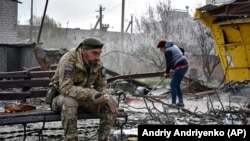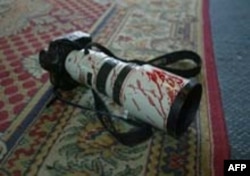
Rights watchdog Amnesty International has warned that world order is under threat amid a wave of international rule breaking, deepening global inequality, superpower rivalries, and accelerating climate change.
The group said in its annual report on the state of global human rights, released on April 24, that the world is "reaping a harvest of terrifying consequences" from the pressures of escalating conflict and "a near breakdown" of international law, with advances in artificial intelligence likely to exacerbate the situation.
Amnesty said its report "presents a stark assessment of the betrayal of human rights principles by today’s leaders and institutions," and that in the face of multiplying conflicts, "the actions of many powerful states have further damaged the credibility of multilateralism and undermined the global rules-based order first established in 1945."
"Alongside Russia's ongoing aggression against Ukraine, the growing number of armed conflicts, and massive human rights violations witnessed, for example, in Sudan, Ethiopia and [Burma] – the global rule-based order is at risk of decimation," said Amnesty Secretary General Agnes Callamard.
The report noted that the war in Ukraine, launched by neighboring Russia in February 2022, was another key contributor to the decline in the global human rights situation.
Amnesty called out indiscriminate attacks by Russian forces "on populated areas and civilian energy and grain export infrastructure."
"Both Russian and Ukrainian forces used cluster munitions despite their inherently indiscriminate nature and lasting risks for civilians," the report reads.
The report pointedly criticizes the United States for its "brazen use" of its veto power to "paralyze" the UN Security Council for months as it tried to mediate a halt in fighting between Israel and Hamas, which has been designated a terrorist organization by Washington and the European Union, in the Gaza Strip.
It also slams the "grotesque double standards" of European countries such as the United Kingdom and Germany, given their "well-founded protestations" about war crimes by Russia and Hamas, while they simultaneously bolster the actions of Israeli and U.S. authorities in this conflict.
The violence erupted after Hamas launched an attack on Israel on October 7 that killed some 1,200 people, mostly citizens, while around 240 others were taken back to Gaza as hostages. Since then, an Israeli offensive aimed at neutralizing Hamas has killed almost 35,000 people, according to the Hamas-led Health Ministry in Gaza.
“The confounding failure of the international community to protect thousands of civilians -- a horrifically high percentage of them children -- from being killed in the occupied Gaza Strip makes patently clear that the very institutions set up to protect civilians and uphold human rights are no longer fit for purpose. What we saw in 2023 confirms that many powerful states are abandoning the founding values of humanity and universality enshrined in the Universal Declaration of Human Rights,” Callamard said.

